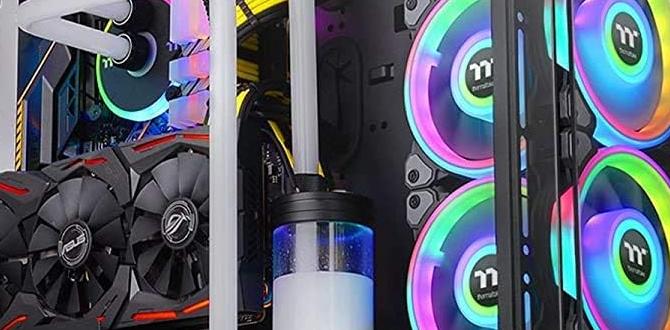When it comes to building a powerful gaming PC, one unconventional option to consider is converting a server chassis into a gaming rig. Server chassis are typically designed to house server components, but with some modifications, they can be transformed into a gaming powerhouse. However, there are several considerations and steps to keep in mind before embarking on this project. In this article, I will discuss the various aspects of converting a server chassis into a gaming PC and provide guidelines on compatibility, power supply, cooling solutions, GPU installation, motherboard installation, cable management, airflow optimization, as well as testing and troubleshooting.
Considerations for Server Chassis Conversion
Compatibility with Gaming Hardware
Before converting a server chassis into a gaming PC, it is crucial to ensure compatibility with gaming hardware. Check the dimensions of the chassis to verify whether it can accommodate standard gaming components such as motherboards, GPUs, cooling systems, and power supplies.
Assessing Power Supply and Cooling Solutions
Ensuring Sufficient Power Output
One of the key considerations when converting a server chassis into a gaming PC is the power supply. Gaming components typically require higher power output compared to server hardware. Ensure that the power supply unit (PSU) in the server chassis can provide sufficient wattage to support gaming components.
Modifications for GPU Installation
GPU Compatibility and Space Considerations
GPUs are essential components in gaming PCs, so it is important to assess GPU compatibility and space considerations in the server chassis. Ensure that the chassis has sufficient space and proper ventilation for the GPU to fit and operate optimally.
Installation of Motherboard and Components
Fitting Components Into Server Chassis
When installing the motherboard and other components into the server chassis, ensure that they fit properly and are secured. Make any necessary modifications to the chassis to accommodate the components and ensure proper connectivity.
Cable Management and Airflow Optimization
Maintaining Proper Airflow for Cooling
Effective cable management is essential for airflow optimization in a gaming PC. Organize cables neatly to prevent obstruction of airflow and ensure that components receive adequate cooling. Consider installing additional fans or cooling solutions if needed.
Testing and Troubleshooting
Ensuring Proper Functionality and Performance
After converting the server chassis into a gaming PC, thorough testing and troubleshooting are necessary to ensure proper functionality and performance. Test each component, run benchmarking tests, and address any issues that may arise to optimize the gaming experience.
Conclusion
Converting a server chassis into a gaming PC can be a rewarding project for enthusiasts looking to create a unique and powerful gaming rig. By considering compatibility, power supply, cooling solutions, GPU installation, motherboard installation, cable management, airflow optimization, as well as thorough testing and troubleshooting, you can successfully transform a server chassis into a capable gaming machine.
FAQs
1. Can any server chassis be converted into a gaming PC?
Not all server chassis are suitable for conversion into a gaming PC. It is essential to check compatibility with gaming hardware and ensure there is adequate space and ventilation for components.
2. Do I need to upgrade the power supply when converting a server chassis into a gaming PC?
Upgrading the power supply may be necessary to support the higher power requirements of gaming components. Ensure the PSU can provide sufficient wattage for optimal performance.
3. How can I optimize airflow in a converted server chassis gaming PC?
To optimize airflow, organize cables for proper cable management, ensure components are adequately spaced for airflow, and consider adding extra fans or cooling solutions for efficient heat dissipation.
4. What are the key differences between server hardware and gaming hardware?
Server hardware is designed for stability and reliability in data centers, while gaming hardware focuses on performance and graphics capabilities for immersive gaming experiences.
5. What tools and equipment do I need for converting a server chassis into a gaming PC?
You may need tools such as screwdrivers, cable ties, thermal paste, and additional cooling fans, depending on the modifications required. Ensure you have a well-equipped workspace for the conversion process.
